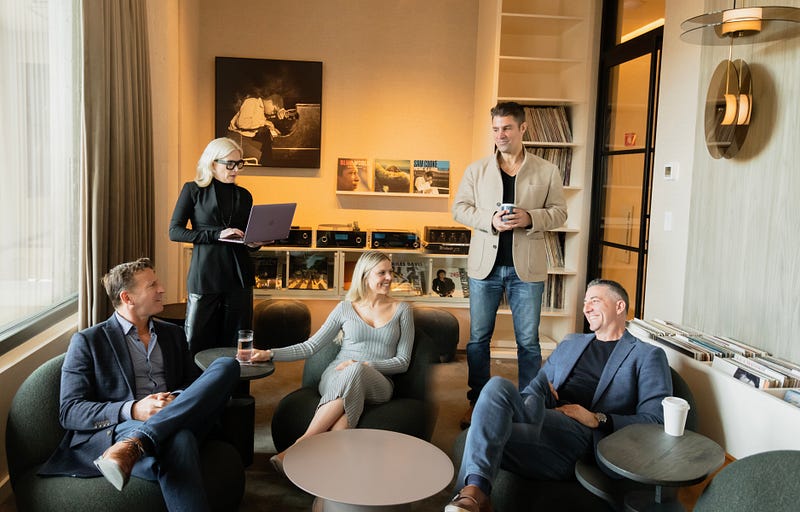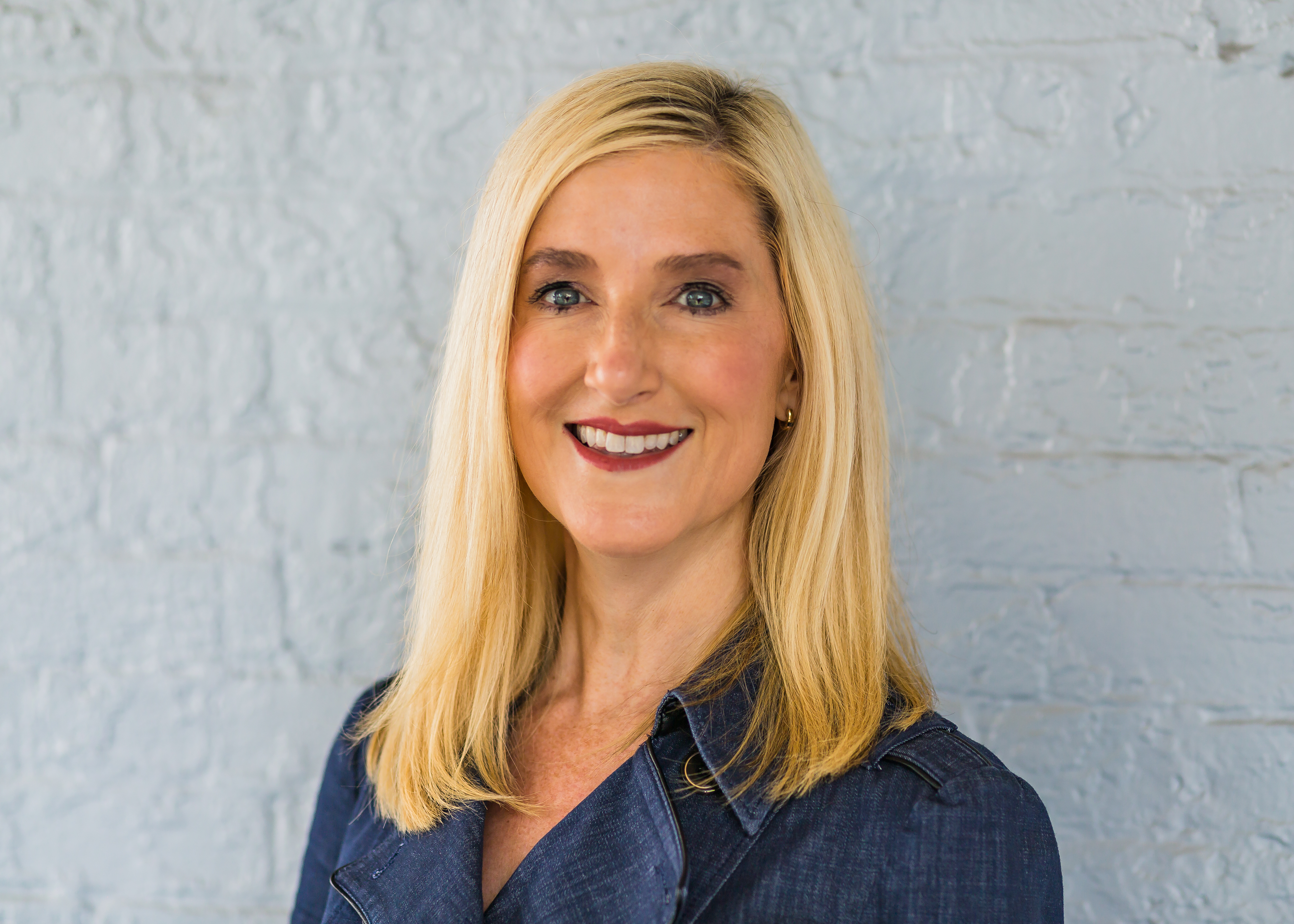Providing regular programming and bringing in thought leadership to further support common initiatives such as goal setting, healthy habit creation, teamwork, nutrition, time management strategies etc to develop skill sets that directly impact success.
The pandemic pause brought us to a moment of collective reckoning about what it means to live well and to work well. As a result, employees are sending employers an urgent signal that they are no longer willing to choose one — life or work — at the cost of the other. Working from home brought life literally into our work. And as the world now goes hybrid, employees are drawing firmer boundaries about how much of their work comes into their life. Where does this leave employers? And which perspectives and programs contribute most to progress? In our newest interview series, Working Well: How Companies Are Creating Cultures That Support & Sustain Mental, Emotional, Social, Physical & Financial Wellness, we are talking to successful executives, entrepreneurs, managers, leaders, and thought leaders across all industries to share ideas about how to shift company cultures in light of this new expectation. We’re discovering strategies and steps employers and employees can take together to live well and to work well.
As a part of this series, we had the pleasure of interviewing Mar Soraparu, BIÂN Partner & Chief Wellness Officer.
Executive life coach, yoga instructor & holistic wellness consultant Mar Soraparu draws from her extensive background to lead the BIÂN team of Doctors and wellness professionals, conceptualize and develop BIÂN’s dynamic programming and wellness strategy, oversees marketing and branding, and integrates a mindful approach to People Resources for the organization. A University of California, Los Angeles graduate with a Bachelor of Arts degree in Sociology, Mar is also a RobbinsMadanes Certified Life Coach, a Frame of Mind Certified Life Coach, an Optimize Coach and is a Board-Certified Coach (BCC) through the Center for Credentialing and Education. Mar’s background coalesces with her authentic excitement to enrich the lives of those around her, making her influence integral to BIÂN as a community and brand.
Thank you for making time to visit with us about the topic of our time. Our readers would like to get to know you better. Tell us about a formative experience that prompted you to change your relationship with work and how work shows up in your life.
I believe that the relationship that you have to all things in life stems from the way you think and feel as we can decide the narrative and the tone that our professional life has. I decided after a brief career in Financial Services that I wanted to merge impact and innovation in my career drawing on elements of my personality that I would consider my strengths. Leaving Financial Services in 2013 to move into the wellness space wasn’t a smooth or easy transition but rather, a purposeful one. I juggled multiple positions to barely make it work but the purpose was there for me to maintain the motivation and focus needed to succeed. Today, I maintain this approach of keeping my eye on my mission for my work — as this has developed a meaningful and healthy relationship that fits into the overall puzzle of my life.
Harvard Business Review predicts that wellness will become the newest metric employers will use to analyze and to assess their employees’ mental, physical and financial health. How does your organization define wellness, and how does your organization measure wellness?
At BIAN, we don’t define wellness but rather lead with the mission of “living a vital life” — where each individual can make choices that contribute to overall well-being physically, emotionally, socially, mentally, medically, and environmentally. Wellness doesn’t have one route and is quite vast and unique to the individual. We measure wellness by the personal contribution that our team and club members make in each of those areas of their life.
Based on your experience or research, how do you correlate and quantify the impact of a well workforce on your organization’s productivity and profitability?
Human beings that are well, contribute to and create great work. It is directly correlated to our success as an organization, and we keep a close eye on this through active leadership. Being a private club in the wellness and social space, we have incredible resources for our teams to integrate daily, weekly, and annual efforts towards their well-being. Our team members having access to 6 onsite Doctors and a dozen wellness experts in a variety of fields that offer thought leadership and ongoing support unique to the individual to offer sustainable programming to our teams to practice regularly. In addition, we promote personal responsibility as one of our key pillars of our People Resources program that draws upon motivational techniques to encourage participation in one’s overall wellbeing. Having our Partners actively involved in the day to day of the operations, we can consistently support this initiative. We offer this model to organizations across Chicago — as a unique opportunity to implement powerful programs unique to the culture through our corporate initiative.
Even though most leaders have good intentions when it comes to employee wellness, programs that require funding are beholden to business cases like any other initiative. The World Health Organization estimates for every $1 invested into treatment for common mental health disorders, there is a return of $4 in improved health and productivity. That sounds like a great ROI. And, yet many employers struggle to fund wellness programs that seem to come “at the cost of the business.” What advice do you have to offer to other organizations and leaders who feel stuck between intention and impact?
I suggest to employers to understand that even the seemingly smallest of offerings, can go a long way. I work often with “micro-shifts” to wellness to support the busy individual without it becoming disruptive to the environment or the workflow. Wellness rituals and support can be implemented through education, resources and simple on-site programming that even a few times a month, can provide a step in the right direction with an organization. Thought leadership in the wellness space from an external partner is one of the main key drivers that can provide impact and support.
Speaking of money matters, a recent Gallup study reveals employees of all generations rank well-being as one of their top three employer search criteria. How are you incorporating wellness programs into your talent recruitment and hiring processes?
With the BIAN model, wellness plays directly plays into the recruitment and hiring processes as the knowledge and first-hand experience is pivotal to providing stellar programming. Being well is a true currency for success and this is explored in our initial conversations. We must practice what we preach.
Can you please tell us more about a couple of specific ways workplaces would benefit from investing in your ideas above to improve employee wellness?
Providing strong resources regularly can support the longevity of the employee which in turn contributes to stronger terms, long-term loyalty, effective leadership, and impact. Leaders create leaders — and the healthier your individuals are, the healthier your teams and organization is.
How are you reskilling leaders in your organization to support a “Work Well” culture?
At BIAN we offer direct access for all employees to our 6 on-staff Doctors for a range of support from medical, mental, emotional, and physical health in addition to the education around how they can also implement this into their daily lives outside of the workplace. Education is critical in changing behaviors and adopting successful and healthy routines and mindsets.
Ideas take time to implement. What is one small step every individual, team, or organization can take to get started on these ideas — to get well?
Understand and listen to your people about what they feel they need. Understanding the gaps can allow for an organization to structure a program unique to the makeup of the group. Wellness — can be practiced in many ways but again isn’t a “one size fits all.:” While there are fundamental pillars such as physical, emotional, mental, social, and environmental wellness, determine what specific needs live within your culture that falls under these segments.

What are your “Top 5 Trends To Track In the Future of Workplace Wellness?”
- HOW YOU CARE
Providing access to resources for team members that is caring towards their lives both inside AND outside the workplace. Examples of this would be a stipend towards fitness/exercise facilities in combination with workplace or team member contests to hit healthy goals, data-driven efforts such as “step challenges” with wearables, or on-site mental health/destressing programs/body work.
2. HOW YOU MOTIVATE
Motivation is the key need in many organizations to develop strong teams. Motivation can be harnessed through a transparent sharing of the company mission and how each individual impacts this mission — regardless of the level of their position. Clarity is key and ensuring that everyone is “rowing in the same direction” provides healthy goal setting and camaraderie.
3. HOW YOU DEVELOP
Providing regular programming and bringing in thought leadership to further support common initiatives such as goal setting, healthy habit creation, teamwork, nutrition, time management strategies etc to develop skill sets that directly impact success.
4. HOW YOU PLAY
The element of play is a lost art amongst adults but something that directly impacts happiness, success, and productivity. Incorporate this idea of “play” through basic incorporation — coloring contests, relay races, dress up, karaoke — you name it. Flexing the “play muscle” is well worth it.
5. HOW YOU FUEL
It sounds the most simple, but we are behind the ball nationally through out workplace nutrition. Offering sugary, salty, processed foods in the workplace directly goes against a healthy environment and well people. Providing access to REAL foods that support the whole person — will pay dividends well into the future.
What is your greatest source of optimism about the future of workplace wellness?
Leaders are listening — and this radiates positive momentum in the space. It takes trailblazers and leaders to believe in the mission and this is contagious.
Our readers often like to continue the conversation with our featured interviewees. How can they best connect with you and stay current on what you’re discovering?
Visit us in Chicago or keep up with us via www.livebian.com or @livebian
Thank you for sharing your insights and predictions. We appreciate the gift of your time and wish you continued success and wellness.


